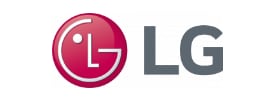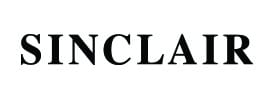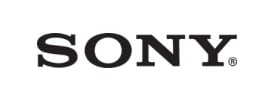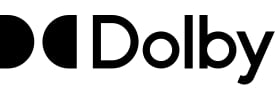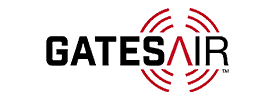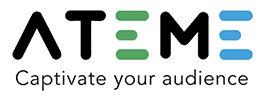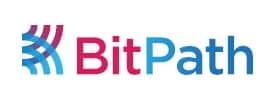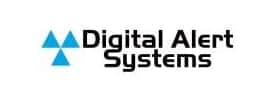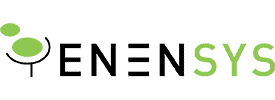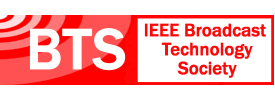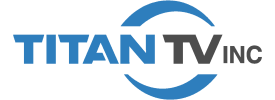ATSC 3.0 : Standards
An ATSC Standard is a document that states basic specifications or criteria that are necessary for effective implementation and interoperability of Advanced Terrestrial Broadcast Systems. Documents are provided in the links below in the Acrobat (PDF) format. Schema files are provided in the ZIP format.
-
A/200, “Regional Service Availability”Most Recent Document Approved: 3 April 2024
This document specifies information describing the availability of broadcast services over time within a broadcast region. Broadcast receivers may use this information to help construct a list of services that may be available to them. Additionally, the information provides a schedule that allows receivers to maintain an up-to-date service list. This document describes how the information may be distributed using either an ATSC 1.0 broadcast (or any MPEG-2 transport stream), ATSC 3.0 broadcast, or over broadband.
Download current version: A/200:2024-04, “Regional Service Availability”, 3 April 2024, and accompanying schema. This version of the Standard is normatively referenced in A/300:2024-04.
Previous Versions
There are multiple versions of this document. Please be sure to download the desired version. For amendments, the text includes a list of changes, the rationale for the changes, and compatibility considerations.
Download A/200:2020, “Regional Service Availability”, and accompanying schema, approved 8 July 2020. This version of the Standard is normatively referenced by A/300:2021.
Download A/200:2022-03, “Regional Service Availability”, and accompanying schema, 31 March 2022. This version of the Standard is normatively referenced in A/300:2022-04.
Download A/200:2023-03, “Regional Service Availability”, and accompanying schema, 28 March 2023. This version of the Standard is normatively referenced in A/300:2023-03.
-
A/300, “ATSC 3.0 System”Most Recent Document Approved: 3 April 2024
This Standard describes the ATSC 3.0 digital television system. ATSC 3.0 is a suite of voluntary technical Standards and Recommended Practices that is fundamentally different from predecessor ATSC systems and is therefore largely incompatible with them. This divergence from earlier design is intended to allow substantial improvements in performance, functionality, and efficiency sufficient to warrant implementation of a non-backwards-compatible system. With higher capacity to deliver Ultra High-Definition services, robust reception on a wide range of devices, improved efficiency, IP transport, advanced emergency alerting, personalization features, and interactive capability, the ATSC 3.0 Standard provides much more capability than previous generations of terrestrial broadcasting. This document describes the complete ATSC 3.0 Standard, which encompasses a set of individual standards documents, the interworking of which is described therein.
Download current version: A/300:2024-04, “ATSC 3.0 System,” approved 3 April 2024. A ZIP file is provided that includes the A/300:2024-04 Standard and all ATSC documents that are normatively referenced in A/300:2024-04.
A Spanish language version of A/300:2024-04 is available for download. Note that this document is a translation of the Standard and has not gone through the usual ATSC review process. A/300:2024-04 (available above) is the authoritative Standard.
Previous Versions
There are multiple versions of this document. Please be sure to download the desired version. For amendments, the text includes a list of changes, the rationale for the changes, and compatibility considerations.
Download A/300:2019, “ATSC 3.0 System,” approved 17 September 2019. A zip file is provided that includes the A/300 Standard and all ATSC documents that are normatively referenced in A/300:2019.
Download A/300:2020, “ATSC 3.0 System,” approved 15 May 2020. A zip file is provided that includes the A/300 Standard and all ATSC documents that are normatively referenced in A/300:2020.
Download A/300:2021, “ATSC 3.0 System,” approved 7 July 2021. A zip file is provided that includes the A/300 Standard and all ATSC documents that are normatively referenced in A/300:2021.
Download A/300:2022-04, “ATSC 3.0 System,” approved 8 April 2022. A ZIP file is provided that includes the A/300:2022-04 Standard and all ATSC documents that are normatively referenced in A/300:2022-04.
Download A/300:2023-03, “ATSC 3.0 System,” approved 28 March 2023. A ZIP file is provided that includes the A/300:2023-03 Standard and all ATSC documents that are normatively referenced in A/300:2023-03.
-
A/321, “System Discovery and Signaling”Most Recent Document Approved: 3 April 2024
This document describes the system discovery and signaling architecture for the ATSC 3.0 physical layer. Broadcasters anticipate providing multiple wireless-based services, in addition to conventional broadcast television in the future. Such services may be time-multiplexed together within a single RF channel. The bootstrap provides a universal entry point into a broadcast waveform. The bootstrap employs a fixed configuration (e.g., sampling rate, signal bandwidth, subcarrier spacing, time-domain structure) known to all receiver devices and carries information to enable processing and decoding the wireless service associated with a detected bootstrap. This capability ensures that broadcast spectrum can be adapted to carry new services and/or waveforms for the public interest to continue to be served in the future.
Download current version: A/321:2024-04, “System Discovery and Signaling”, 3 April 2024. This version of the Standard is normatively referenced in A/300:2024-04.
Previous Versions
There are multiple versions of this document. Please be sure to download the desired version. For amendments, the text includes a list of changes, the rationale for the changes, and compatibility considerations.
Download A/321:2016, “System Discovery and Signaling”, approved 23 March 2016. This Standard is normatively referenced by A/300:2019, A/300:2020, and A/300:2021.
A/321:2016, dated 23 March 2016, was approved and adopted by reference into the U.S. FCC Rules 47 CFR § 73.682. In subsequent versions of A/321, normative and informative references to other ATSC standards and recommended practices have been updated to reference current version documents. No other changes have been made.
Download A/321:2022-03, “System Discovery and Signaling”, 31 March 2022. This version of the Standard is normatively referenced in A/300:2022-04.
Download A/321:2023-03, “System Discovery and Signaling”, 31 March 2022. This version of the Standard is normatively referenced in A/300:2023-03.
-
A/322, “Physical Layer Protocol”Most Recent Document Approved: 13 September 2024
This Standard describes the RF/Transmission of a physical layer waveform. This waveform enables flexible configurations of physical layer resources to target a variety of operating modes. The intent is to signal the applied technologies and allow for future technology adaptation.
Download current version: A/322:2024-09, “Physical Layer Protocol”, 13 September 2024.
Previous Versions
There are multiple versions of this document. Please be sure to download the desired version. For amendments, the text includes a list of changes, the rationale for the changes, and compatibility considerations.
Download A/322:2017, “Physical Layer Protocol”, approved 6 June 2017. This is the version referenced by the U.S. FCC.
A/322:2017, dated 6 June 2017, was approved and adopted by reference into the FCC Rules 47 CFR § 73.682. The following document summarizes changes made to A/322 since the 2017 version. Download Approved Changes to A/322, “Physical Layer Protocol”, 13 September 2024.
Download A/322:2018, “Physical Layer Protocol”, approved 26 December 2018. This version of the Standard is normatively referenced in A/300:2019.
Download A/322:2020, “Physical Layer Protocol”, approved 23 January 2020. This version of the Standard is normatively referenced in A/300:2020.
Download A/322:2021, “Physical Layer Protocol”, approved 20 January 2021. This version of the Standard is normatively referenced in A/300:2021.
Download A/322:2022-03, “Physical Layer Protocol”, 31 March 2022. This version of the Standard is normatively referenced in A/300:2022-04.
Download A/322:2022-03, Amendment No. 1, “Time Expression”, approved 24 November 2022.
Download A/322:2022-11, “Physical Layer Protocol”, 24 November 2022.
Download A/322:2023-03, “Physical Layer Protocol”, 28 March 2023. This version of the Standard is normatively referenced in A/300:2023-03.
Download A/322:2024-04, “Physical Layer Protocol”, 3 April 2024. This version of the Standard is normatively referenced in A/300:2024-04.
Download A/322:2024-04 Amendment No. 1, “MIMO Extension”, approved 13 September 2024.
-
A/323, “Dedicated Return Channel for ATSC 3.0”Most Recent Document Approved: 3 April 2024
This standard specifies the physical layer and the Medium Access Control (MAC) layer for the ATSC 3.0 Dedicated Return Channel (DRC). The DRC physical layer specifies the uplink framing, baseband signal generation, random access, and downlink synchronization scheme. The DRC MAC layer specifies the MAC procedures, MAC PDU formats, and signaling schemes between the ATSC 3.0 downlink and DRC.
Download current version: A/323:2024-04, “Dedicated Return Channel for ATSC 3.0”, 3 April 2024, and accompanying schema. This version of the Standard is normatively referenced in A/300:2024-04.
Previous Versions
There are multiple versions of this document. Please be sure to download the desired version. For amendments, the text includes a list of changes, the rationale for the changes, and compatibility considerations.
Download A/323:2018, “Dedicated Return Channel for ATSC 3.0”, approved 7 December 2018, and accompanying schema. This version of the Standard is normatively referenced in A/300:2019, A/300:2020, and A/300:2021.
Download A/323:2022-03, “Dedicated Return Channel for ATSC 3.0”, 31 March 2022, and accompanying schema. This version of the Standard is normatively referenced in A/300:2022-04.
Download A/323:2023-03, “Dedicated Return Channel for ATSC 3.0”, 28 March 2023, and accompanying schema. This version of the Standard is normatively referenced in A/300:2023-03.
-
A/324, “Scheduler / Studio to Transmitter Link”Most Recent Document Approved: 11 April 2025
This standard specifies the protocol on the Studio-to-Transmitter Link (STL) from studio-side infrastructure to a Single Frequency Network (SFN) of Transmitters. It defines delivery protocols for ALP Transport. The document also defines possible interfaces among the studio infrastructure, for example the interconnection of the ATSC 3.0 Link Layer Protocol (ALP) and a Broadcast Gateway. This document specifies certain constraints on the scheduling of content and signaling on the Physical Layer. The described scheduling process enables Preamble generation and emission time management. It specifies certain aspects of Transmitter behavior and certain parameters of Transmitter operation.
Download current version: A/324:2025-04, “Scheduler / Studio to Transmitter Link”, 11 April 2025, and accompanying schema.
A Candidate Standard revision of A/324 is available. See the Candidate Standards page.
Previous Versions
There are multiple versions of this document. Please be sure to download the desired version. For amendments, the text includes a list of changes, the rationale for the changes, and compatibility considerations.
Download A/324:2018, “Scheduler / Studio to Transmitter Link”, approved 5 January 2018. This version of the Standard is normatively referenced in A/300:2019 and A/300:2020.
Download A/324:2021, “Scheduler / Studio to Transmitter Link”, and accompanying schema, approved 24 March 2021. This version ofd the Standard is normatively referenced in A/300:2021.
Download A/324:2021 Amendment No. 1, DSMapping Clarification”, and accompanying schema, approved 4 October 2021.
Download A/324:2021, “Scheduler / Studio to Transmitter Link, with Amendment No. 1”, and accompanying schema. This document has Amendment No. 1 integrated into the standard.
Download A/324:2022-03, “Scheduler / Studio to Transmitter Link”, and accompanying schema, 31 March 2022. This version of the Standard is normatively referenced in A/300:2022-04.
Download A/324:2022-03 Amendment No. 1, MIMO Configuration in Broadcast Gateway”, approved 13 June 2022.
Download A/324:2022-06, “Scheduler / Studio to Transmitter Link”, 13 June 2022, and accompanying schema.
Download A/324:2023-03, “Scheduler / Studio to Transmitter Link”, 28 March 2023, and accompanying schema. This version of the Standard is normatively referenced in A/300:2023-03.
Download A/324:2024-04, “Scheduler / Studio to Transmitter Link”, 3 April 2024, and accompanying schema. This version of the Standard is normatively referenced in A/300:2024-04.
Download A/324:2024-04 Amendment No. 1, “MIMO, LDM, CB Joint Operation”, approved 8 January 2025.
Download A/324:2025-01, “Scheduler / Studio to Transmitter Link”, 8 January 2025, and accompanying schema.
Download A/324:2025-01 Corrigendum No. 1, approved 11 April 2025.
-
A/330, “Link-Layer Protocol”Most Recent Document Approved: 3 April 2024
This standard defines the ATSC Link-Layer Protocol (ALP). ALP corresponds to the data link layer in the OSI 7-layer model. ALP provides a path to deliver IP packets, link layer signaling packets, and MPEG-2 Transport Stream (TS) packets down to the RF Layer and back, after reception. ALP also optimizes the proportion of useful data in the ATSC 3.0 Physical Layer by means of efficient encapsulation and overhead reduction mechanisms for IP and MPEG-2 TS transport. ALP provides extensible headroom for future use.
Download current version: A/330:2024-04, “Link-Layer Protocol”, 3 April 2024. This version of the Standard is normatively referenced in A/300:2024-04.
Previous Versions
There are multiple versions of this document. Please be sure to download the desired version. For amendments, the text includes a list of changes, the rationale for the changes, and compatibility considerations
Download A/330:2019, “Link-Layer Protocol”, approved 3 May 2019. This version of the Standard is normatively referenced in A/300:2019, A/300:2020, and A/300:2021.
Download A/330:2022-03, “Link-Layer Protocol”, 31 March 2022. This version of the Standard is normatively referenced in A/300:2022-04.
Download A/330:2023-03, “Link-Layer Protocol”, 28 March 2023. This version of the Standard is normatively referenced in A/300:2023-03.
-
A/331, “Signaling, Delivery, Synchronization, and Error Protection”Most Recent Document Approved: 18 June 2025
This document specifies protocols used for delivery and synchronization of media and non-timed data in the ATSC 3.0 system. A/331 specifies the technical mechanisms and procedures pertaining to service signaling and IP-based delivery of a variety of ATSC 3.0 services and contents to ATSC 3.0-capable receivers over broadcast, broadband, and hybrid broadcast/broadband networks. The service signaling functionality defines the data formats and information components necessary to discover and acquire user services. The IP-based delivery functionality specifies two application transport protocols for the carriage of media content and service signaling data over broadcast and/or broadband networks to receivers. The delivery functionality also includes mechanisms for the synchronization of media components delivered on the same or different transport networks, and application-layer forward error correction methods that enable error-free reception and consumption of media streams or discrete file objects. A component of this standard is the accompanying schema.
Download current version: A/331:2025-06, “Signaling, Delivery, Synchronization, and Error Protection”, 18 June, and accompanying schema.
Previous Versions
There are multiple versions of this document. Please be sure to download the desired version. For amendments, the text includes a list of changes, the rationale for the changes, and compatibility considerations.
Download A/331:2019, “Signaling, Delivery, Synchronization, and Error Protection”, and accompanying schema, approved 20 June 2019. This version of the Standard is normatively referenced in A/300:2019.
Download A/331:2019 Amendment No. 1, “MMT Hybrid Delivery”, approved 6 January 2020.
Download A/331:2019 Amendment No. 2, “Fix Daylight Saving”, approved 16 January 2020.
Download A/331:2019 Amendment No. 3, “ServiceId URL and BSID-PLP Mapping”, approved 26 December 2019.
Download A/331:2019 Amendment No. 4, “User Agent String”, approved 15 January 2020.
Download A/331:2019 Amendment No. 5, “Fix RRT”, approved 30 December 2019.
Download A/331:2019 Amendment No. 6, “Simulcast TSID”, approved 31 December 2019.
Download A/331:2019 Amendment No. 7, “DRM System ID”, approved 3 January 2020.
Download A/331:2019 Amendment No. 8, “Uniqueness of @serviceID”, approved 1 January 2020.
Download A/331:2019 Amendment No. 9, “Fix Keep Screen Clear”, approved 2 January 2020.
Download A/331:2020, “Signaling, Delivery, Synchronization, and Error Protection”, 16 January 2020. This document is a rollup of Amendments No. 1 through 9 to A/331:2019. The accompanying schema (unchanged from A/331:2019) can be downloaded from the above link. This version of the Standard is normatively referenced in A/300:2020.
Download A/331:2020 Amendment No. 1, “Multiple App Fixes”, approved 27 October 2020. See also the accompanying schema.
Download A/331:2020 Amendment No. 2, “AEAT Subgroups”, approved 19 January 2021. See also the accompanying schema.
Download A/331:2021, “Signaling, Delivery, Synchronization, and Error Protection”, 19 January 2021, and accompanying schema. This document is a rollup of A/331:2020 with Amendments No. 1 and 2.
Download A/331:2021 Amendment No. 1, “RRT Schema”, and accompanying schema, approved 22 April 2021.
Download A/331:2021 Amendment No. 2, “Advanced Emergency Information”, and accompanying schema, approved 27 May 2021.
Download A/331:2021 Amendment No. 3, “HELD Processing Order”, approved 8 June 2021.
Download A/331:2021 Amendment No. 4, “User Agent”, approved 1 October 2021.
Download A/331:2021, “Signaling, Delivery, Synchronization, and Error Protection, with Amendments No. 1, 2, and 3”. This document has Amendments No. 1, 2, and 3 integrated into the standard. An administrative rollup of the schemas for A/331:2021 with Amendments No. 1, 2, and 3 is also available: download the ZIP file. This version of the Standard is normatively referenced in A/300:2021.
Download A/331:2021, “Signaling, Delivery, Synchronization, and Error Protection, with Amendments No. 1, 2, 3, and 4”. This document has Amendments No. 1, 2, 3, and 4 integrated into the standard. An administrative rollup of the schemas for A/331:2021 with Amendments is also available: download the ZIP file.
Download A/331:2021 Amendment No. 5, “Broadcast-Broadband Configuration Signaling”, approved 9 November 2021.
Download A/331:2022-02, “Signaling, Delivery, Synchronization, and Error Protection”, and accompanying schema, approved 15 February 2022.
Download A/331:2022-03, “Signaling, Delivery, Synchronization, and Error Protection”, and accompanying schema, 31 March 2022. This version of the Standard is normatively referenced in A/300:2022-04.
Download A/331:2022-03 Corrigendum No. 1, “SLT and S-TSID”, approved 22 September 2022.
Download A/331:2022-09, “Signaling, Delivery, Synchronization, and Error Protection”, and accompanying schema, 22 September 2022.
Download A/331:2022-09 Amendment No. 1, “Signaling Server”, approved 30 November 2022.
Download A/331:2022-11, “Signaling, Delivery, Synchronization, and Error Protection”, and accompanying schema, 30 November 2022.
Download A/331:2022-11 Amendment No. 1, “Application Lifecycle”, approved 8 February 2023.
Download A/331:2022-11 Amendment No. 2, “Timing/Buffer Model – IMSC1”, approved 16 February 2023.
Download A/331:2023-02, “Signaling, Delivery, Synchronization, and Error Protection”, and accompanying schema, 23 March 2023.
Download A/331:2023-03, “Signaling, Delivery, Synchronization, and Error Protection”, and accompanying schema, 28 March 2023. This version of the Standard is normatively referenced in A/300:2023-03.
Download A/331:2023-03 Amendment No. 1, “MMT DRM”, approved 16 August 2023.
Download A/331:2023-08, “Signaling, Delivery, Synchronization, and Error Protection”, 16 August 2023, and accompanying schema.
Download A/331:2023-08 Amendment No. 1, “FDT Enhancement”, and accompanying schema, approved 4 October 2023.
Download A/331:2023-10, “Signaling, Delivery, Synchronization, and Error Protection”, 4 October 2023, and accompanying schema. Schema relating to A/331:2023-08 Amendment No. 1 (see above) may be downloaded from this link.
Download A/331:2023-10 Amendment No. 1, “MMT Signing”, approved 13 December 2023.
Download A/331:2023-12, “Signaling, Delivery, Synchronization, and Error Protection”, 13 December 2023, and accompanying schema. Schema relating to A/331:2023-08 Amendment No. 1 (see above) may be downloaded from this link.
Download: A/331:2024-04, “Signaling, Delivery, Synchronization, and Error Protection”, 3 April 2024, and accompanying schema. This version of the Standard is normatively referenced in A/300:2024-04.
Download A/331:2024-04 Amendment No. 1, “Data Service Type, et al.”, approved 13 February 2025.
Download A/331:2025-02, “Signaling, Delivery, Synchronization, and Error Protection”, 13 February 2025, and accompanying schema.
Download A/331:2025-02 Amendment No. 1, “@configuration Clarifications”, approved 18 June 2025.
-
A/332, “Service Announcement”Most Recent Document Approved: 14 February 2025
The normative portions of this document define a standard for announcement of services in an ATSC 3.0 broadcast. The Service Announcement Specifications define the data formats and delivery mechanisms used to announce the content and services being delivered, or scheduled for delivery, in ATSC 3.0.
Download current version: A/332:2025-02, “Service Announcement,” 13 February 2025, and accompanying schema.
Previous Versions
There are multiple versions of this document. Please be sure to download the desired version. For amendments, the text includes a list of changes, the rationale for the changes, and compatibility considerations.
Download A/332:2017, “Service Announcement”, and accompanying schema, approved 6 December 2017. This version of the Standard is normatively referenced in A/300:2019 and A/300:2020.
Download A/332:2017 Amendment No. 1, “Capability Codes,”, and accompanying schema, approved 26 March 2021.
Download A/332:2017, “Service Announcement, with Amendment No. 1,”.This document has Amendment No. 1 integrated into the standard. See the hyperlink above for the schema file. This version of the Standard is normatively referenced in A/300:2021.
Download A/332:2022-02, “Service Announcement,” and accompanying schema, approved 11 February 2022.
Download A/332:2022-03, “Service Announcement,” and accompanying schema, 31 March 2022. This version of the Standard is normatively referenced in A/300:2022-04.
Download A/332:2023-03, “Service Announcement,” and accompanying schema, 28 March 2023. This version of the Standard is normatively referenced in A/300:2023-03.
Download: A/332:2024-04, “Service Announcement,” 3 April 2024, and accompanying schema. This version of the Standard is normatively referenced in A/300:2024-04.
Download A/332:2024-04, Amendment No. 1, “VVC Capability Codes,” approved 14 February 2025.
-
A/333, “Service Usage Reporting”Most Recent Document Approved: 3 April 2024
The normative portions of this document define a standard for service usage reporting for ATSC 3.0.
Download current version: A/333:2024-04, “Service Usage Reporting”, 3 April 2024. This version of the Standard is normatively referenced in A/300:2024-04.
Previous Versions
There are multiple versions of this document. Please be sure to download the desired version. For amendments, the text includes a list of changes, the rationale for the changes, and compatibility considerations.
Download A/333:2017, “Service Usage Reporting”, approved 4 January 2017. This version of the Standard is normatively referenced in A/300:2019, A/300:2020, and A/300:2021.
Download A/333:2022-03, “Service Usage Reporting”, 31 March 2022. This version of the Standard is normatively referenced in A/300:2022-04.
Download A/333:2023-03, “Service Usage Reporting”, 28 March 2023. This version of the Standard is normatively referenced in A/300:2023-03.
-
A/334, “Audio Watermark Emission”Most Recent Document Approved: 3 April 2024
This document specifies the VP1 audio watermark for use with systems conforming to the ATSC 3.0 family of specifications. The document specifies the format in which the audio watermark resides in a PCM audio signal. Emission by a broadcaster of the audio watermark is optional.
Download current version: A/334:2024-04, “Audio Watermark Emission”, 3 April 2024. This version of the Standard is normatively referenced in A/300:2024-04.
Previous Versions
There are multiple versions of this document. Please be sure to download the desired version. For amendments, the text includes a list of changes, the rationale for the changes, and compatibility considerations.
Download A/334:2016, “Audio Watermark Emission”, approved 19 September 2016. This version of the Standard is normatively referenced in A/330:2019, A/300:2020, and A/300:2021.
Download A/334:2022-03, “Audio Watermark Emission”, 31 March 2022. This version of the Standard is normatively referenced in A/300:2022-04.
Download A/334:2023-03, “Audio Watermark Emission”, 28 March 2023. This version of the Standard is normatively referenced in A/300:2023-03.
-
A/335, “Video Watermark Emission”Most Recent Document Approved: 3 April 2024
The video watermark technology described in this document provides the capability to robustly embed ancillary data in the transmitted pixels of a video signal. It is intended to provide a data path for its ancillary data payload that can readily survive changes in video compression data rate, transcoding to other video compression codecs, and delivery over legacy consumer HDMI interfaces. It is not intended to be a tamper-resistant or indelible watermark, and it may be deliberately obliterated by an intermediary. Emission by a broadcaster of the video watermark is optional.
Download current version: A/335:2024-04, “Video Watermark Emission”, 4 April 2024. This version of the Standard is normatively referenced in A/300:2024-04.
Previous Versions
There are multiple versions of this document. Please be sure to download the desired version. For amendments, the text includes a list of changes, the rationale for the changes, and compatibility considerations.
Download A/335:2016 “Video Watermark Emission”, approved 20 September 2016. This version of the Standard is normatively referenced in A/300:2019.
Download A/335:2016 Amendment No. 1, “Additional Video Resolutions”, approved 9 December 2019.
Download A/335:2016, “Video Watermark Emission, with Amendment No. 1”. This document has Amendment No. 1 integrated into the standard. This version of the Standard is normatively referenced in A/300:2020.
Download A/335:2016 Amendment No. 2, “Expanded Range of Encoding Values”, approved 2 February 2021.
Download A/335:2016, “Video Watermark Emission, with Amendments No. 1 and No. 2”. This document has Amendments No. 1 and No. 2 integrated into the standard. This version of the Standard is normatively referenced in A/300:2021.
Download A/335:2022-03, “Video Watermark Emission”, 31 March 2022. This version of the Standard is normatively referenced in A/300:2022-04.
Download A/335:2023-03, “Video Watermark Emission”, 28 March 2023. This version of the Standard is normatively referenced in A/300:2023-03.
-
A/336, “Content Recovery in Redistribution Scenarios”Most Recent Document Approved: 3 April 2024
This document specifies methods by which receivers may recover content that is available from a broadcaster, but not delivered directly to the receiver through the RF broadcast signal. This method may be useful in the use case when the receiver is connected to a set-top box via an HDMI cable and is only receiving uncompressed A/V content and not the full signaling tables or alternate content choices offered by the broadcaster. The methods described in this document require an automatic content recognition (ACR) mechanism. The ACR mechanism is either the video and audio watermarks specified for use within ATSC 3.0 broadcast emissions or a fingerprint mechanism described in this document.
This document describes the method for a receiver to recover content via a broadband interface once it has acquired an ATSC 3.0 watermark payload or has identified content using fingerprints. It also specifies the format of certain files that may be returned in response to such a content recovery request.
Download current version: A/336:2024-04,”Content Recovery in Redistribution Scenarios”, 3 April 2024. This version of the Standard is normatively referenced in A/300:2024-04.
Previous Versions
There are multiple versions of this document. Please be sure to download the desired version. For amendments, the text includes a list of changes, the rationale for the changes, and compatibility considerations.
Download A/336:2018, “Content Recovery in Redistribution Scenarios”, approved 11 December 2018. This version of the Standard is normatively referenced in A/300:2019.
Download A/336:2018 Amendment No. 1, “Timed VP1 Messages”, approved 26 August 2019.
Download A/336:2018 Amendment No. 2, Addition of Media Type Definitions”, approved 27 August 2019.
Download A/336:2018 Amendment No. 3, “Dynamic Event Message Enhancements”, approved 3 October 2019.
Download A/336:2019, Content Recovery in Redistribution Scenarios”, 3 October 2019. This is an editorial rollup of Amendments 1 – 3 to A/336:2018. This version of the Standard is normatively referenced in A/300:2020.
Download A/336:2019 Amendment No. 1, “IANA Registration Alignment”, approved 4 June 2020.
Download A/336:2019,”Content Recovery in Redistribution Scenarios, with Amendment No. 1”. This document has Amendment No. 1 integrated into the standard. This version of the Standard is normatively referenced in A/300:2021.
Download A/336:2019 Corrigendum No. 1”, approved 7 November 2021.
Download A/336:2022-03,”Content Recovery in Redistribution Scenarios”, 31 March 2022. This version of the Standard is normatively referenced in A/300:2022-04.
Download A/336:2023-03,”Content Recovery in Redistribution Scenarios”, 28 March 2023. This version of the Standard is normatively referenced in A/300:2023-03.
Download A/336:2023-03 Corrigendum No. 1, CRC32 Specification”, approved 11 August 2023.
Download A/336:2023-08,”Content Recovery in Redistribution Scenarios”, 11 August 2023.
Download A/336:2023-08 Amendment No. 1, Improved Timeline Recovery”, approved 15 February 2024.
Download A/336:2024-02,”Content Recovery in Redistribution Scenarios”, 15 February 2024.
A/336 establishes entity_string() and Server Code namespaces for use by broadcasters who want to incorporate ATSC-specified video and audio watermarks into their services. Use of A/336 requires registration of values within those namespaces prior to their use. The following organization is authorized to issue entity_string() and Server Code registrations: Verance.
-
A/337, “Application Event Delivery”Most Recent Document Approved: 3 April 2024
This document specifies mechanisms for signaling the properties of applications, including their lifecycle states, and also mechanisms for delivering activation notifications synchronized with a time base, so that the actions of applications can be synchronized accordingly.
Download current version: A/337:2024-04, “Application Event Delivery”, 3 April 2024, and accompanying schema. This version of the Standard is normatively referenced in A/300:2024-04.
Previous Versions
There are multiple versions of this document. Please be sure to download the desired version. For amendments, the text includes a list of changes, the rationale for the changes, and compatibility considerations.
Download A/337:2019, “Application Event Delivery”, approved 30 April 2019. A component of A/337 is in the accompanying schema. This version of the Standard is normatively referenced in A/300:2019, A/300:2020, and A/300:2021.
Download A/337:2022-03, “Application Event Delivery”, and accompanying schema, 31 March 2022. This version of the Standard is normatively referenced in A/300:2022-04.
Download A/337:2023-03, “Application Event Delivery”, and accompanying schema, 28 March 2023. This version of the Standard is normatively referenced in A/300:2023-03.
-
A/338, “Companion Device”Most Recent Document Approved: 3 April 2024
This document specifies the communication protocol between an ATSC 3.0 primary device and an ATSC 3.0 companion device. In this context, the primary device is the primary receiver and is used to present the primary content. The companion device communicates with the primary device to present related, supplementary content, or even the same content as that being presented on the primary device. Examples of primary devices include television sets, set-top/converter boxes, and mobile devices that are capable of receiving ATSC 3.0 services. Examples of companion devices are laptops, tablets, and smartphones.
Download current version: A/338:2024-04, “Companion Device”, 3 April 2024, and accompanying schema. This version of the Standard is normatively referenced in A/300:2024-04.
Previous Versions
There are multiple versions of this document. Please be sure to download the desired version. For amendments, the text includes a list of changes, the rationale for the changes, and compatibility considerations.
Download A/338:2017, “Companion Device”, approved 17 April 2017. This version of the Standard is normatively referenced in A/300:2019.
Download A/338:2019 “Companion Device”, approved 2 October 2019. This version of the Standard is normatively referenced in A/300:2020.
Download A/338:2019 Amendment No. 1, “CD Event Stream API”, approved 21 January 2020.
Download A/338:2021, “Companion Device”, approved 19 February 2021. This version of the Standard is normatively referenced in A/300:2021.
Download A/338:2022-01, “Companion Device”, approved 17 January 2022, and accompanying schema.
Download A/338:2022-03, “Companion Device”, and accompanying schema, 31 March 2022. This version of the Standard is normatively referenced in A/300:2022-04.
Download A/338:2023-03, “Companion Device”, and accompanying schema, 28 March 2023. This version of the Standard is normatively referenced in A/300:2023-03.
-
A/341, “Video – HEVC”Most Recent Document Approved: 3 April 2024
This Standard describes the video coding constraints on ITU-T Rec. H.265 | International Standard ISO/IEC 23008-2 (“HEVC”) when it is used for video compression in the ATSC 3.0 Digital Television System. Any other video coding technologies in the ATSC 3.0 system are documented in their own ATSC Standard(s). A/300 provides references to the various video coding technology document(s) in the ATSC 3.0 system. Signaling of the video compression technology in use is defined A/331.
Download current version: A/341:2024-04, “Video – HEVC”, 3 April 2024. This version of the Standard is normatively referenced in A/300:2024-04.
Previous Versions
There are multiple versions of this document. Please be sure to download the desired version. For amendments, the text includes a list of changes, the rationale for the changes, and compatibility considerations.
Download A/341:2019, “Video – HEVC”, approved 14 February 2019. This version of the Standard is normatively referenced in A/300:2019 and A/300:2020.
Download A/341:2019 Amendment No. 1, “References”, approved 2 March 2021.
Download A/341:2019 Amendment No. 2, “2094-40”, approved 17 September 2021.
Download A/341:2019, “Video – HEVC, with Amendment No. 1”. This document has Amendment No. 1 integrated into the standard. This version of the Standard is normatively referenced in A/300:2021.
Download A/341:2021, “Video – HEVC”, 17 September 2021. This document is a rollup of Amendments No. 1 and No. 2 to A/341:2019.
Download A/341:2022-03, “Video – HEVC”, 31 March 2022. This version of the Standard is normatively referenced in A/300:2022-04.
Download A/341:2022-03 Amendment No. 1, “Chroma Location / AFD and Bar Data”, approved 7 September 2022.
Download A/341:2022-09, “Video – HEVC”, 7 September 2022.
Download current version: A/341:2023-03, “Video – HEVC”, 28 March 2023. This version of the Standard is normatively referenced in A/300:2023-03.
-
A/342 Part 1, “Audio Common Elements”Most Recent Document Approved: 3 April 2024
This document specifies the common framework for ATSC 3.0 Audio. It is intended to be used in conjunction with the specific audio technologies described in subsequent parts of this Standard. The ATSC 3.0 audio system provides immersive and personalizable sound for television. It is not compatible with the audio system used in ATSC 1.0 service.
Download current version: A/342:2024-04 Part 1, “Audio Common Elements”, 3 April 2024. This version of the Standard is normatively referenced in A/300:2024-04.
Previous Versions
There are multiple versions of this document. Please be sure to download the desired version. For amendments, the text includes a list of changes, the rationale for the changes, and compatibility considerations.
Download A/342:2017 Part 1, “Audio Common Elements”, approved 24 January 2017. This version of the Standard is normatively referenced in A/300:2019 and A/300:2020.
Download A/342:2021 Part 1, “Audio Common Elements”, approved 9 March 2021. This version olf the Standard is normatively referenced in A/300:2021.
Download A/342:2022-03 Part 1, “Audio Common Elements”, 31 March 2022. This version of the Standard is normatively referenced in A/300:2022-04.
Download A/342:2023-03 Part 1, “Audio Common Elements”, 28 March 2023. This version of the Standard is normatively referenced in A/300:2023-03.
-
A/342 Part 2, “AC-4 System”Most Recent Document Approved: 3 April 2024
This document standardizes the AC-4 audio system for use in the ATSC 3.0 Digital Television System. It describes the characteristics of the AC-4 audio system and establishes a set of constraints on ETSI TS 103 190-2 for use within ATSC 3.0 broadcast emissions. The ATSC 3.0 audio system provides an enhanced feature set and improves upon the capabilities of past ATSC audio systems. The system provides listeners with both a personalized and an immersive experience. The ATSC 3.0 audio system establishes a common framework for multiple Next Generation Audio (NGA) systems, both current and future. The AC-4 audio system is one of the NGA systems standardized in ATSC 3.0.
Download current version: A/342:2024-04 Part 2, “AC-4 System”, 3 April 2024. This version of the Standard is normatively referenced in A/300:2024-04.
Previous Versions
There are multiple versions of this document. Please be sure to download the desired version. For amendments, the text includes a list of changes, the rationale for the changes, and compatibility considerations.
Download A/342:2017 Part 2, “AC-4 System”, approved 23 February 2017. This version of the Standard is normatively referenced in A/300:2019 and A/300:2020.
Download A/342:2021 Part 2, “AC-4 System”, approved 10 March 2021. This version of the Standard is normatively referenced in A/300:2021.
Download A/342:2022-03 Part 2, “AC-4 System”, 31 March 2022. This version of the Standard is normatively referenced in A/300:2022-04.
Download A/342:2023-03 Part 2, “AC-4 System”, 28 March 2023. This version of the Standard is normatively referenced in A/300:2023-03.
-
A/342 Part 3, “MPEG-H System”Most Recent Document Approved: 3 April 2024
This document standardizes the MPEG-H Audio system for use in the ATSC 3.0 Digital Television System. It describes the characteristics of the MPEG-H Audio system and establishes a set of constraints on MPEG-H Audio for use within ATSC 3.0 broadcast emissions. The ATSC 3.0 audio system provides an enhanced feature set and improves upon the capabilities of past ATSC audio systems. The system provides listeners with both a personalized and an immersive experience. The ATSC 3.0 audio system establishes a common framework for multiple Next Generation Audio (NGA) systems, both current and future. The MPEG-H Audio system is one of the NGA systems standardized in ATSC 3.0.
Download current version: A/342:2024-04 Part 3, “MPEG-H System”, 3 April 2024. This version of the Standard is normatively referenced in A/300:2024-04.
Previous Versions
There are multiple versions of this document. Please be sure to download the desired version. For amendments, the text includes a list of changes, the rationale for the changes, and compatibility considerations.
Download A/342:2017 Part 3, “MPEG-H System”, approved 3 March 2017. This version of the Standard is normatively referenced in A/300:2019 and A/300:2020.
Download A/342:2021 Part 3, “MPEG-H System”, approved 11 March 2021. This version of the Standard is normatively referenced in A/300:2021.
Download A/342:2022-03 Part 3, “MPEG-H System”, 31 March 2022. This version of the Standard is normatively referenced in A/300:2022-04.
Download A/342:2023-03 Part 3, “MPEG-H System”, 28 March 2023. This version of the Standard is normatively referenced in A/300:2023-03.
-
A/343, “Captions and Subtitles”Most Recent Document Approved: 3 April 2024
This standard defines the required technology for closed caption and subtitle tracks over ROUTE-DASH and MMT transports. This includes the content essence and the packaging and timing.
Download current version: A/343:2024-04, “Captions and Subtitles”, 3 April 2024. This version of the Standard is normatively referenced in A/300:2024-04.
Previous Versions
There are multiple versions of this document. Please be sure to download the desired version. For amendments, the text includes a list of changes, the rationale for the changes, and compatibility considerations.
Download A/343:2018, “Captions and Subtitles”, approved 10 October 2018. This version of the Standard is normatively referenced in A/300:2019 and A/300:2020.
Download A/343:2018 Amendment No. 1, “Safe Area”, approved 8 February 2021.
Download A/343:2018 Amendment No. 2, “Font Names”, approved 20 September 2021.
Download A/343:2018, “Captions and Subtitles with Amendment No. 1”. This document has Amendment No. 1 integrated into the standard. This version of the Standard is normatively referenced in A/300:2021.
Download A/343:2018, “Captions and Subtitles with Amendments No. 1 and No. 2”. This document has Amendments No. 1 and No. 2 integrated into the standard.
Download A/343:2022-02, “Captions and Subtitles”, approved 10 February 2022.
Download A/343:2022-03, “Captions and Subtitles”, 31 March 2022. This version of the Standard is normatively referenced in A/300:2022-04.
Download A/343:2023-03, “Captions and Subtitles”, 28 March 2023. This version of the Standard is normatively referenced in A/300:2023-03.
-
A/344, “ATSC 3.0 Interactive Content″Most Recent Document Approved: 11 June 2025
This document describes the interactive content environment provided by an ATSC 3.0 receiver. This environment is comprised of a standard W3C User Agent with known characteristics, a WebSocket interface for obtaining information from the receiver and controlling various receiver functionality, and an HTTP interface for accessing files delivered over broadcast. This document also specifies the life cycle of the interactive content when delivered over broadband or broadcast or both.
Download current version: A/344:2025-06, “ATSC 3.0 Interactive Content”, 11 June 2025.
A Candidate Standard revision of A/344 is available. See the Candidate Standards page.
Previous Versions
There are multiple versions of this document. Please be sure to download the desired version. For amendments, the text includes a list of changes, the rationale for the changes, and compatibility considerations.
Download A/344:2019, “ATSC 3.0 Interactive Content”, approved 2 May 2019. This version of the Standard is normatively referenced in A/300:2019.
Download A/344:2019 Amendment No. 1, “Persistent IDs”, approved 29 July 2019.
Download A/344:2019 Amendment No. 2, “JSON RPC Cancel Request API Addition”, approved 16 December 2019.
Download A/344:2019 Amendment No. 3, “Redistribution Use Case”, approved 18 December 2019.
Download A/344:2019 Amendment No. 4, “RMP State”, approved 19 December 2019.
Download A/344:2019 Amendment No. 5, “Capabilities”, approved 23 December 2019.
Download A/344:2019 Amendment No. 6, “Remove JavaScript Sample Code”, approved 24 December 2019.
Download A/344:2019 Amendment No. 7, “CacheRequest API”, approved 25 December 2019.
Download A/344:2019 Amendment No. 8, “Signaling Data”, approved 7 February 2020.
Download A/344:2019 Amendment No. 9, “Service Guide”, approved 31 January 2020.
Download A/344:2019 Amendment No. 10, “DRM Error Codes”, approved 3 February 2020.
Download A/344:2020, “ATSC 3.0 Interactive Environment”, 7 February 2020. This document is a rollup of Amendments No. 1 through 10 to A/344:2019, plus editorial cleanup.
Download A/344:2020 Corrigendum No. 1, approved 29 April 2020.
Download A/344:2020, “ATSC 3.0 Interactive Environment, with Corrigendum No. 1”. This document has Corrigendum No. 1 integrated into the standard. This version of the Standard is normatively referenced in A/300:2020.
Download A/344:2020 Amendment No. 1, “Launch App”, approved 12 October 2020.
Download A/344:2021, “ATSC 3.0 Interactive Content”, and accompanying schema, approved 23 March 2021. This version of the Standard is normatively referenced in A/300:2021.
Download A/344:2022-03, “ATSC 3.0 Interactive Content”, and accompanying schema, 31 March 2022. This version of the Standard is normatively referenced in A/300:2022-04.
Download A/344:2023-02, “ATSC 3.0 Interactive Content”, approved 17 February 2023.
Download A/344:2023-03, “ATSC 3.0 Interactive Content”, 28 March 2023. This version of the Standard is normatively referenced in A/300:2023-03.
Download A/344:2023-03 Amendment No. 1, “RF Signal Change API”, approved 19 May 2023.
Download A/344:2023-05, “ATSC 3.0 Interactive Content”, 19 May 2023.
Download A/344:2024-02, “ATSC 3.0 Interactive Content”, approved 13 February 2024.
Download: A/344:2024-04, “ATSC 3.0 Interactive Content”, 3 April 2024. This version of the Standard is normatively referenced in A/300:2024-04.
Download: A/344:2025-02, “ATSC 3.0 Interactive Content”, approved 26 February 2025.
Download: A/344:2025-02, Corrigendum No. 1″, approved 11 June 2025.
-
A/345, “VVC Video”Most Recent Document Approved: 10 February 2025
This Standard describes the video coding constraints on ITU-T Rec. H.266 | International Standard ISO/IEC 23090-3 (“VVC”) when it is used for video compression in the ATSC 3.0 Digital Television System. Any other video coding technologies in the ATSC 3.0 system are documented in their own ATSC Standard(s). ATSC A/300 provides references to the various video coding technology document(s) in the ATSC 3.0 system. Signaling of the video compression technology in use is defined in ATSC A/331.
Download current version: A/345:2025-02, “VVC Video”, approved 10 February 2025.
-
A/360, “ATSC 3.0 Security and Service Protection”Most Recent Document Approved: 3 April 2024
This standard specifies the mechanisms for security and service protections in ATSC 3.0 systems.
Download current version: A/360:2024-04, “ATSC 3.0 Security and Service Protection,” 3 April 2024, and accompanying schema. This version of the Standard is normatively referenced in A/300:2024-04.
Previous Versions
There are multiple versions of this document. Please be sure to download the desired version. For amendments, the text includes a list of changes, the rationale for the changes, and compatibility considerations.
Download A/360:2019, “ATSC 3.0 Security and Service Protection”, approved 20 August 2019. This version of the Standard is normatively referenced in A/300:2019 and A/300:2020.
Download A/360:2019 Amendment No. 1, “A/360 Schema”, approved 22 May 2020.
Download A/360:2019 Amendment No. 2, “Signing Modifications”, approved 16 February 2021.
Download A/360:2019 Amendment No. 3, “cbcs”, approved 06 January 2022.
Download A/360:2019 Amendment No. 4, “Section 5.2.2.6”, approved 10 January 2022.
Download A/360:2019, “ATSC 3.0 Security and Service Protection, with Amendment No. 1 and Amendment No. 2”, and accompanying schema. This document has Amendment No. 1 and Amendment No. 2 integrated into the standard. This version of the Standard is normatively referenced in A/300:2021.
Download A/360:2022-01, “ATSC 3.0 Security and Service Protection,” approved 10 January 2022, and accompanying schema.
Download A/360:2022-03, “ATSC 3.0 Security and Service Protection,” and accompanying schema, 31 March 2022. This version of the Standard is normatively referenced in A/300:2022-04.
Download A/360:2022-03 Amendment No. 1, “Clarify CDT GZIP Requirement”, approved 2 May 2022.
Download A/360:2022-05, “ATSC 3.0 Security and Service Protection,” 2 May 2022, and accompanying schema.
Download A/360:2022-05 Amendment No. 1, “Remove Reference to CTA 2053”, approved 14 November 2022.
Download A/360:2022-11, “ATSC 3.0 Security and Service Protection,” 14 November 2022, and accompanying schema.
Download A/360:2023-03, “ATSC 3.0 Security and Service Protection,” 28 March 2023, and accompanying schema. This version of the Standard is normatively referenced in A/300:2023-03.
Download A/360:2023-03 Amendment No. 1, “MMT DRM”, approved 15 August 2023.
Download A/360:2023-08, “ATSC 3.0 Security and Service Protection,” 15 August 2023, and accompanying schema.
Download A/360:2023-08 Amendment No. 1, “MMT Signing”, approved 12 December 2023.
Download A/360:2023-12, “ATSC 3.0 Security and Service Protection,” 12 December 2023, and accompanying schema.
Subscribe to our Newsletter
Subscribe to The Standard, our monthly newsletter, to stay up-to-date with ATSC news and events around the world.





